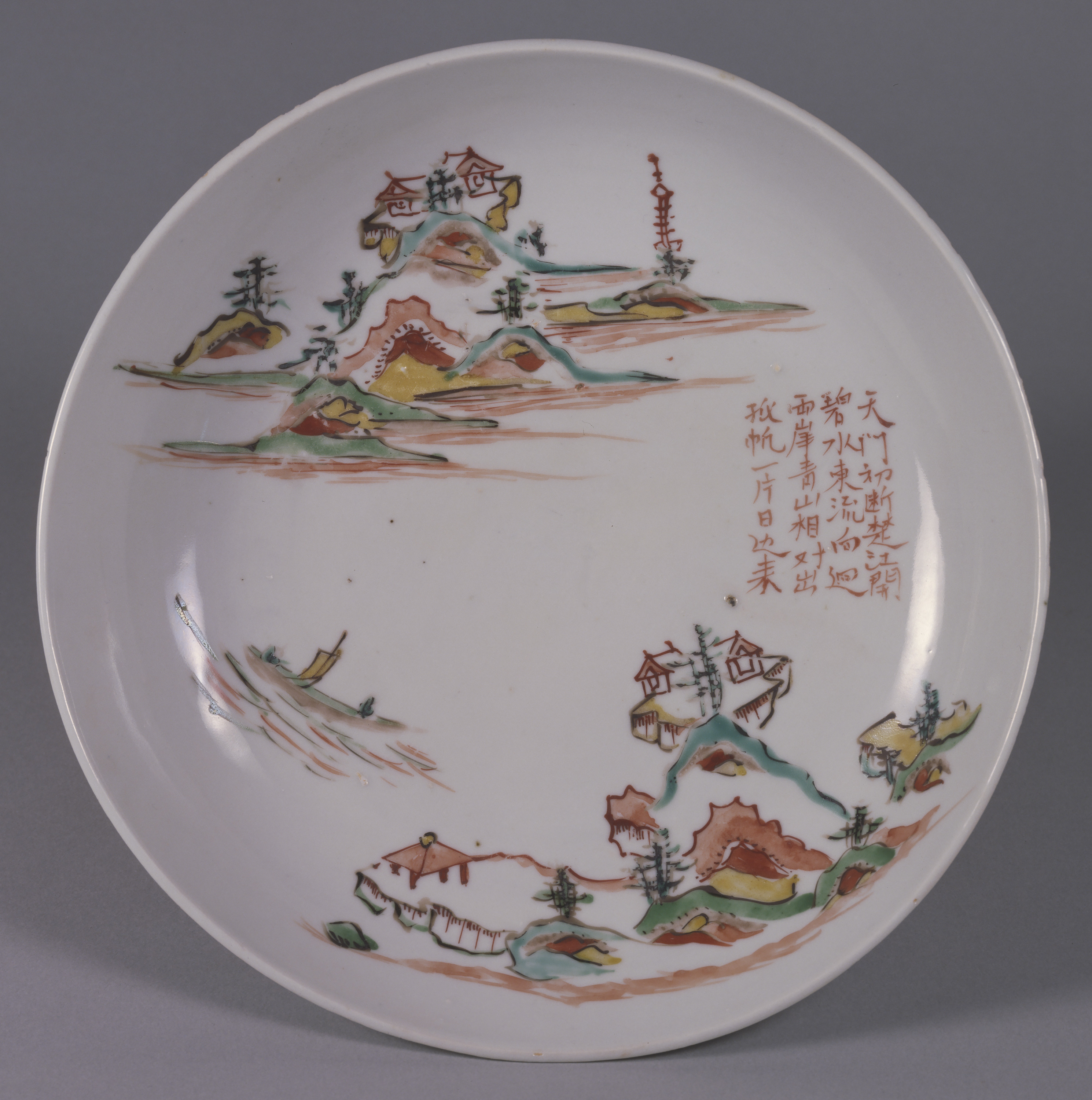- TOP
- Jingdezhen Plate with Scenes of the Yangtze River and the Heavenly Gate in Overglaze Enamels
Overview
Jingdezhen Plate with Scenes of the Yangtze River and the Heavenly Gate in Overglaze Enamels
- Museum No.
- GK337
Showing 1-6 of 1
| Title | Jingdezhen Plate with Scenes of the Yangtze River and the Heavenly Gate in Overglaze Enamels |
|---|---|
| Designation | |
| Artist | |
| Category | Ceramics(G), Chinese Ceramics |
| Country | China |
| Period | Ming |
| Century | 17th |
| Year | |
| Quantity | |
| Materials | |
| Dimensions | Height 4.4cm Diameter 13cm Mouth diameter 21cm |
| Inscription by | |
| Signature/Seals Etc | 底に「大明成化年製」銘あり |
| Donor |
This object may be one within a set or the title of a set. To see all objects in the set, perform a Category Search by the Museum Number below, entering numerals only before the hyphen.







Nankin aka-e is the Japanese name for Chinese porcelain with polychrome overglaze enamels (Ch., wucai) produced at private kilns in Jingdezhen from the late Ming (1368-1644) through the early Qing (1644-1911) dynasties. The name of this ware, Nankin aka-e, is derived from the location of the Ming court at Nanjing. However, porcelain produced in and imported from China during the Tianqi and Chongzhen eras (1621-44) at the end of the Ming are known as Tenkei (Ch., Tianqi) aka-e and are differentiated from Nankin aka-e.
The characters to the right of the picture are from the poem, "Viewing Mount Tianmen," by Li Bo (701-62). The fact that there are plates of exactly the same design among early underglaze blue porcelains, made in the Tianqi and Chongzhen eras, suggests that perhaps these plates should be included within the scope of Tenkei aka-e.
The inside of the foot of this plate bears the inscription, "Chenghua era of the Great Ming," in underglaze blue, but the actual date of production is thought to be close to one and a half centuries after Chenghua. Forged inscriptions of this type are not uncommon among Nankin aka-e ware.
China-Ming